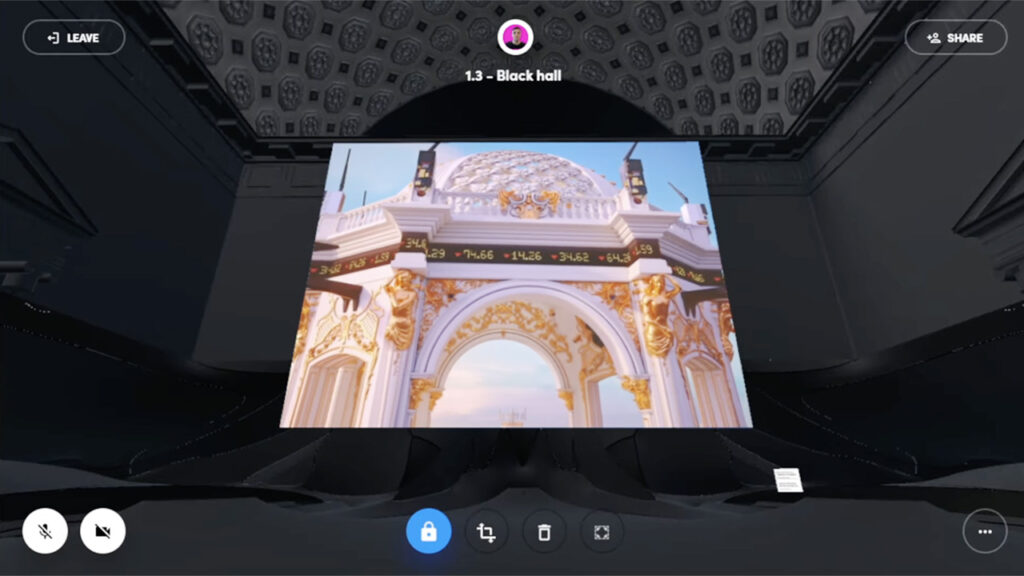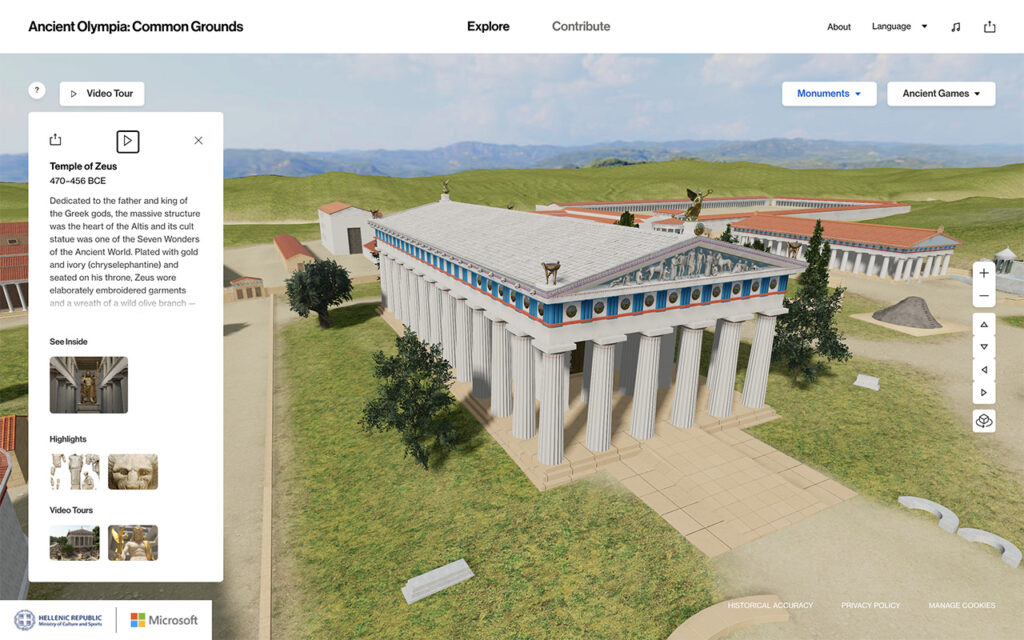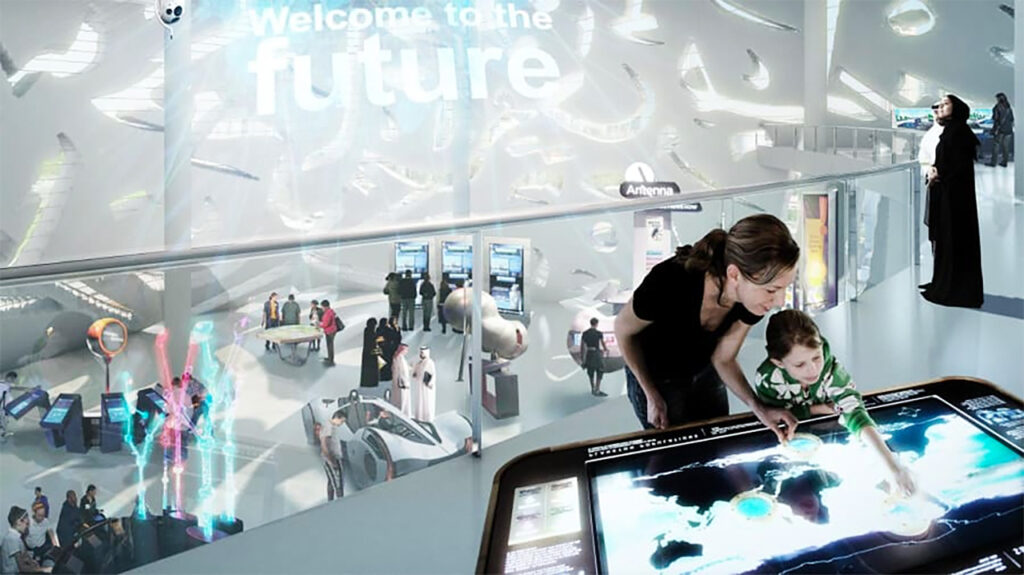For the cultural sector, 2022 opened on a minor note. The coming of Omicron has prompted a new ripple of museum closures and event postponements, as the world girds itself for yet another pandemic year. Which is not to say that the cultural outlook is entirely dim: digital projects continue to emerge, the NFT marketplace bustles on, while cultural organizations, as they’ve done before, look ready to meet the exigencies of the moment with innovative vigor.
The year ahead, then, won’t fall short on ventures that will broaden the creative possibilities of cultural programming, engagement, and commerce. Uncertainty, after all, breeds opportunity. Here, Jing Culture & Commerce rounds up five trends we’re watching in 2022 that we anticipate will come to shape our museum futures.
The museum meets the metaverse

The Ethereal Aether, the State Hermitage Museum’s first virtual exhibition to spotlight NFTs. Image: Spatial
Of course, the metaverse from Decentraland to Somnium Space is currently not devoid of museums or galleries. Apart from digitally native establishments like the Museum of Crypto Art, organizations such as König Galerie and Sotheby’s have set foot in the metaverse, constructing digital monuments to house digital art. No traditional institution, though, has entered the space — until now.
On the heels of some high-profile NFT sales and The Ethereal Aether, its November virtual exhibition of NFT art, Russia’s State Hermitage Museum is due to launch its own “digital avatar” in the metaverse, as part of a project dubbed Celestial Hermitage. According to Dimitri Ozerkov, head of the museum’s Contemporary Art Division, “We are all moving into the digital era and our digital twin will be following us everywhere.” As a project bearing out the commitment of one of the world’s largest museums to the NFT enterprise, Celestial Hermitage will be closely watched and, for institutions planning similar moves, possibly emulated.
Immersion marches on — and beyond
Immersive experiences had quite the year in 2021 and even under the threat of Omicron, show no signs of slowing. Already lined up for 2022 are immersive events such as Netflix’s Stranger Things: The Experience, in addition to ongoing programs by experiential giants like ARTECHOUSE and teamLab. But the immersive offer might just receive a boost from its fellow rising stars, NFTs. Companies including Perception and Enklu are already exploring the realms of holographic NFTs and XR metaverses — elements that can be readily adapted for transportive in-person experiences of crypto art.
Cultural heritage sites take the virtual plane

Ancient Olympia: Common Grounds, an XR project created by A_DA and Microsoft’s AI for Cultural Heritage in partnership with the Hellenic Ministry of Culture and Sports. Image: Microsoft
As the pandemic put a damper on global travel, virtual tours have abounded in the past two years, among which is a growing subset of digital journeys through cultural heritage sites. The Mogao Caves in Dunhuang, Machu Picchu, and ancient Greece have been subjects of such virtual tours, which, besides sparking the interests of homebound audiences in these sites, go some way toward digital preservation. Looking ahead, with projects like Iconem’s upcoming Immersive Angkor, these virtual cultural heritage experiences look set to continue apace in 2022, if not take off, particularly as heritage keeps growing as a key focus of digitization.
The Chinese cultural licensing market goes global
As extensively reported on this site and in our 2021 report, Chinese cultural IPs make up an increasingly robust and lucrative sector — one with the potential to color beyond the local market. Just as Western museums have been licensing their IPs within China, institutions in China are poised to export their cultural goods to reach global consumers. Already, the Dunhuang Culture & Tourism Group has inked a deal with ARTiSTORY that will license Dunhuang’s IP outside of China for the first time. The master licensee foresees the enlarging scope of the country’s licensing landscape, with Chinese cultural IPs gaining global traction and establishing international partnerships.
New museums emerge smart and smarter

Artist rendering of the upcoming (and much-delayed) Museum of the Future in Dubai. Image: courtesy Dubai Future Foundation
From the Nasjonalmuseet to the Grand Egyptian Museum — 2022 is set to be rich with new museum openings. Launching in a post-lockdown world, these newcomers have the advantage of tapping from the outset the creative technologies and digital strategies that have emerged in the wake of the pandemic.
The incoming Museum of the Future in Dubai and the Museum of Modern Electronic Music in Frankfurt, Germany, for example, are touting onsite immersive and interactive elements to enhance visitor experiences, while the Universal Hip Hop Museum, due to arrive in 2024, is planning for technology to empower its programs and operations. They’re moves that capitalize on tomorrow’s tech to capture a young, digitally savvy audience, in turn propelling the cultural institution into the 21st century. As Edward Young of the Universal Hip Hop Museum succinctly put it, “If we’re building for now, we’ve lost.”



